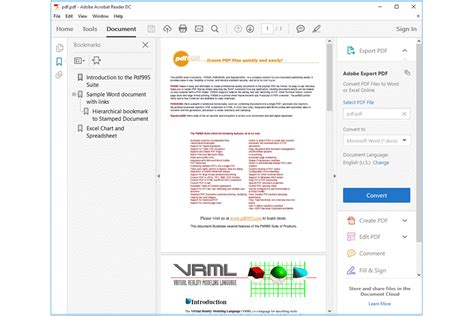Download opennlp
Author: c | 2025-04-24

Download . OpenNLP Releases; OpenNLP Models; Maven Integration; Gradle Integration; Documentation . Manual and Javadocs; FAQ; Wiki; Apache OpenNLP, OpenNLP Download opennlp-tools.jar. opennlp/opennlp-tools.jar.zip( 224 k) The download jar file contains the following class files or Java source files.

Download opennlp-tools-1.5.0-src.zip (OpenNLP) - SourceForge
This article was published as a part of the Data Science Blogathon.OverviewAccording to the internet, OpenNLP is a machine learning-based toolbox for processing natural language text. It has many features, including tokenization, lemmatization, and part-of-speech (PoS) tagging. Named Entity Extraction (NER) is one feature that can assist us to comprehend queries.Introduction to Named Entity ExtractionTO Build a model using OpenNLP with TokenNameFinder named entity extraction program, which can detect custom Named Entities that apply to our needs and, of course, are similar to those in the training file. Job titles, public school names, sports games, music album names, apply musician names, music genres, etc. if you understand, you will get my drift.What is Apache OpenNLP?OpenNLP is free and open-source (Apache license), and it’s already implemented in our preferred search engines, Solr and Elasticsearch, to varying degrees. Solr’s analysis chain includes OpenNLP-based tokenizing, lemmatizing, sentence, and PoS detection. An OpenNLP NER update request processor is also available. On the other side, Elasticsearch includes a well-maintained Ingest plugin based on OpenNLP NER.Image: and Basic UsageTo begin, we must add the primary dependency to our XML file. It has an API for Named Entity Recognition, Sentence Detection, POS Tagging, and Tokenization. org.apache.opennlp opennlp-tools 1.8.4Sentence DetectionLet’s start with a definition of sentence detection.Sentence detection is determining the beginning and conclusion of a sentence, which largely depends on the language being used. “Sentence Boundary Disambiguation” is another name for this (SBD).Sentence detection can be difficult in some circumstances because of the ambiguous nature of the period character. A period marks the conclusion of a phrase, but we can also find it in an email address, an abbreviation, a decimal, and many other places.For sentence detection, like with most NLP tasks, we’ll require a trained model as input, which we expect to find in the /resources folder.TokenizingWe may begin examining a sentence in greater depth now that we have divided a corpus of text into sentences.Tokenization is breaking down a sentence into smaller pieces known as tokens. These tokens are typically words, numbers, or punctuation marks.In OpenNLP, there are three types of tokenizers,1) TokenizerME.2) WhitespaceTokenizer.3) SimpleTokenizer.TokenizerME:We Download . OpenNLP Releases; OpenNLP Models; Maven Integration; Gradle Integration; Documentation . Manual and Javadocs; FAQ; Wiki; Apache OpenNLP, OpenNLP Phrase,@Test public void givenPOSModel_whenPOSTagging_thenPOSAreDetected() throws Exception { SimpleTokenizer tokenizer = SimpleTokenizer.INSTANCE; String[] tokens = tokenizer.tokenize("Ram has a wife named Lakshmi."); InputStream inputStreamPOSTagger = getClass() .getResourceAsStream("/models/en-pos-maxent.bin");POSModel posModel = new POSModel(inputStreamPOSTagger); POSTaggerME posTagger = new POSTaggerME(posModel); String tags[] = posTagger.tag(tokens); assertThat(tags).contains("NNP", "VBZ", "DT", "NN", "VBN", "NNP", "."); }We map the tokens into a list of POS tags via the tag() method. Here, the outcome is:“Ram” – NNP (proper noun)“has” – VBZ (verb)“a” – DT (determiner)“Wife” – NN (noun)“named” – VBZ (verb)“Lakshmi” – NNP (proper noun)“.” – periodDownload the Apache OpenNLP:One of the best use-cases of TOKENIZER is named entity recognition (NER).After you’ve downloaded and extracted OpenNLP, you may test and construct models using the command-line tool (bin/opennlp). However, you will not use this tool in production for two reasons:If you’re using the Name Finder Java API in a Java application (which incorporates Solr/Elasticsearch), you’ll probably prefer it. It has additional features than the command-line utility.Every time you run bin/opennlp, the model is loaded, which adds latency. If you use a REST API to expose NER functionality, you only need to load the model once. The existing Solr/Elasticsearch implementations accomplish this.We’ll continue to use the command-line tool because it makes it easy to learn about OpenNLP’s features. With bin/opennlp, you can create models and use them with the Java API.To begin, we’ll use bin/standard opennlp’s input to pass a string. The class name (TokenNameFinder for NER) and the model file will then be passed as parameters:echo "introduction to solr 2021" | bin/opennlp TokenNameFinder en-ner-date.binYou’ll almost certainly need your model for anything more advanced. For example, if we want “twitter” to return as a URL component. We can try to use the pre-built Organization model, but it won’t help us:$ echo "solr elasticsearch twitter" | bin/opennlp TokenNameFinder en-ner-organization.binWe need to create a custom model for OpenNLP to detect URL chunks.Building a new model:For our model, we’ll need the following ingredients:some data with the entities we want to extract already labeled (URL parts in this case)Change how OpenNLP collects features from the training data if desired.Alter the model’s construction algorithm.Training the data:elasticsearch solr comparison onComments
This article was published as a part of the Data Science Blogathon.OverviewAccording to the internet, OpenNLP is a machine learning-based toolbox for processing natural language text. It has many features, including tokenization, lemmatization, and part-of-speech (PoS) tagging. Named Entity Extraction (NER) is one feature that can assist us to comprehend queries.Introduction to Named Entity ExtractionTO Build a model using OpenNLP with TokenNameFinder named entity extraction program, which can detect custom Named Entities that apply to our needs and, of course, are similar to those in the training file. Job titles, public school names, sports games, music album names, apply musician names, music genres, etc. if you understand, you will get my drift.What is Apache OpenNLP?OpenNLP is free and open-source (Apache license), and it’s already implemented in our preferred search engines, Solr and Elasticsearch, to varying degrees. Solr’s analysis chain includes OpenNLP-based tokenizing, lemmatizing, sentence, and PoS detection. An OpenNLP NER update request processor is also available. On the other side, Elasticsearch includes a well-maintained Ingest plugin based on OpenNLP NER.Image: and Basic UsageTo begin, we must add the primary dependency to our XML file. It has an API for Named Entity Recognition, Sentence Detection, POS Tagging, and Tokenization. org.apache.opennlp opennlp-tools 1.8.4Sentence DetectionLet’s start with a definition of sentence detection.Sentence detection is determining the beginning and conclusion of a sentence, which largely depends on the language being used. “Sentence Boundary Disambiguation” is another name for this (SBD).Sentence detection can be difficult in some circumstances because of the ambiguous nature of the period character. A period marks the conclusion of a phrase, but we can also find it in an email address, an abbreviation, a decimal, and many other places.For sentence detection, like with most NLP tasks, we’ll require a trained model as input, which we expect to find in the /resources folder.TokenizingWe may begin examining a sentence in greater depth now that we have divided a corpus of text into sentences.Tokenization is breaking down a sentence into smaller pieces known as tokens. These tokens are typically words, numbers, or punctuation marks.In OpenNLP, there are three types of tokenizers,1) TokenizerME.2) WhitespaceTokenizer.3) SimpleTokenizer.TokenizerME:We
2025-04-04Phrase,@Test public void givenPOSModel_whenPOSTagging_thenPOSAreDetected() throws Exception { SimpleTokenizer tokenizer = SimpleTokenizer.INSTANCE; String[] tokens = tokenizer.tokenize("Ram has a wife named Lakshmi."); InputStream inputStreamPOSTagger = getClass() .getResourceAsStream("/models/en-pos-maxent.bin");POSModel posModel = new POSModel(inputStreamPOSTagger); POSTaggerME posTagger = new POSTaggerME(posModel); String tags[] = posTagger.tag(tokens); assertThat(tags).contains("NNP", "VBZ", "DT", "NN", "VBN", "NNP", "."); }We map the tokens into a list of POS tags via the tag() method. Here, the outcome is:“Ram” – NNP (proper noun)“has” – VBZ (verb)“a” – DT (determiner)“Wife” – NN (noun)“named” – VBZ (verb)“Lakshmi” – NNP (proper noun)“.” – periodDownload the Apache OpenNLP:One of the best use-cases of TOKENIZER is named entity recognition (NER).After you’ve downloaded and extracted OpenNLP, you may test and construct models using the command-line tool (bin/opennlp). However, you will not use this tool in production for two reasons:If you’re using the Name Finder Java API in a Java application (which incorporates Solr/Elasticsearch), you’ll probably prefer it. It has additional features than the command-line utility.Every time you run bin/opennlp, the model is loaded, which adds latency. If you use a REST API to expose NER functionality, you only need to load the model once. The existing Solr/Elasticsearch implementations accomplish this.We’ll continue to use the command-line tool because it makes it easy to learn about OpenNLP’s features. With bin/opennlp, you can create models and use them with the Java API.To begin, we’ll use bin/standard opennlp’s input to pass a string. The class name (TokenNameFinder for NER) and the model file will then be passed as parameters:echo "introduction to solr 2021" | bin/opennlp TokenNameFinder en-ner-date.binYou’ll almost certainly need your model for anything more advanced. For example, if we want “twitter” to return as a URL component. We can try to use the pre-built Organization model, but it won’t help us:$ echo "solr elasticsearch twitter" | bin/opennlp TokenNameFinder en-ner-organization.binWe need to create a custom model for OpenNLP to detect URL chunks.Building a new model:For our model, we’ll need the following ingredients:some data with the entities we want to extract already labeled (URL parts in this case)Change how OpenNLP collects features from the training data if desired.Alter the model’s construction algorithm.Training the data:elasticsearch solr comparison on
2025-04-12Clojure library interface to OpenNLP - library to interface with the OpenNLP (Open Natural Language Processing)library of functions. Not all functions are implemented yet.Additional information/documentation:Natural Language Processing in Clojure with clojure-opennlpContext searching using Clojure-OpenNLPRead the source from Marginalia IssuesWhen using the treebank-chunker on a sentence, please ensure youhave a period at the end of the sentence, if you do not have a period,the chunker gets confused and drops the last word. Besides, yoursentences should all be grammactially correct anyway right?Usage from Leiningen:[clojure-opennlp "0.5.0"] ;; uses Opennlp 1.9.0clojure-opennlp works with clojure 1.5+Basic Example usage (from a REPL):(use 'clojure.pprint) ; just for this documentation(use 'opennlp.nlp)(use 'opennlp.treebank) ; treebank chunking, parsing and linking lives hereYou will need to make the processing functions using the model files. Theseassume you're running from the root project directory. You can also downloadthe model files from the opennlp project at get-sentences (make-sentence-detector "models/en-sent.bin"))(def tokenize (make-tokenizer "models/en-token.bin"))(def detokenize (make-detokenizer "models/english-detokenizer.xml"))(def pos-tag (make-pos-tagger "models/en-pos-maxent.bin"))(def name-find (make-name-finder "models/namefind/en-ner-person.bin"))(def chunker (make-treebank-chunker "models/en-chunker.bin"))The tool-creators are multimethods, so you can also create any of thetools using a model instead of a filename (you can create a model withthe training tools in src/opennlp/tools/train.clj):(def tokenize (make-tokenizer my-tokenizer-model)) ;; etc, etcThen, use the functions you've created to perform operations on text:Detecting sentences:(pprint (get-sentences "First sentence. Second sentence? Here is another one. And so on and so forth - you get the idea..."))["First sentence. ", "Second sentence? ", "Here is another one. ", "And so on and so forth - you get the idea..."]Tokenizing:(pprint (tokenize "Mr. Smith gave a car to his son on Friday"))["Mr.", "Smith", "gave", "a", "car", "to", "his", "son", "on", "Friday"]Detokenizing:(detokenize ["Mr.", "Smith", "gave", "a", "car", "to", "his", "son", "on", "Friday"])"Mr. Smith gave a car to his son on Friday."Ideally, s == (detokenize (tokenize s)), the detokenization model XMLfile is a work in progress, please let me know if you run intosomething that doesn't detokenize correctly in English.Part-of-speech tagging:(pprint (pos-tag (tokenize "Mr. Smith gave a car to his son on Friday.")))(["Mr." "NNP"] ["Smith" "NNP"] ["gave" "VBD"] ["a" "DT"] ["car" "NN"] ["to" "TO"] ["his" "PRP$"] ["son" "NN"] ["on" "IN"] ["Friday." "NNP"])Name finding:(name-find (tokenize "My name is Lee, not John."))("Lee" "John")Treebank-chunking splits and tags phrases from a pos-tagged sentence.A notable difference is that it returns a list of structs with the:phrase and :tag keys, as seen below:(pprint (chunker (pos-tag (tokenize "The override system is meant to deactivate the accelerator when the brake pedal is pressed."))))({:phrase ["The" "override" "system"], :tag "NP"} {:phrase ["is" "meant" "to" "deactivate"], :tag "VP"} {:phrase ["the" "accelerator"], :tag "NP"} {:phrase ["when"], :tag "ADVP"} {:phrase ["the" "brake" "pedal"], :tag "NP"} {:phrase ["is" "pressed"], :tag "VP"})For just the phrases:(phrases (chunker (pos-tag (tokenize "The override system is meant to deactivate the accelerator when the brake pedal is pressed."))))(["The" "override" "system"] ["is" "meant" "to" "deactivate"] ["the" "accelerator"] ["when"] ["the" "brake" "pedal"] ["is" "pressed"])And with just strings:(phrase-strings (chunker (pos-tag (tokenize "The override system is meant to deactivate the accelerator when the brake pedal is pressed."))))("The override system" "is meant to deactivate" "the accelerator" "when" "the brake pedal" "is pressed")Document
2025-04-02